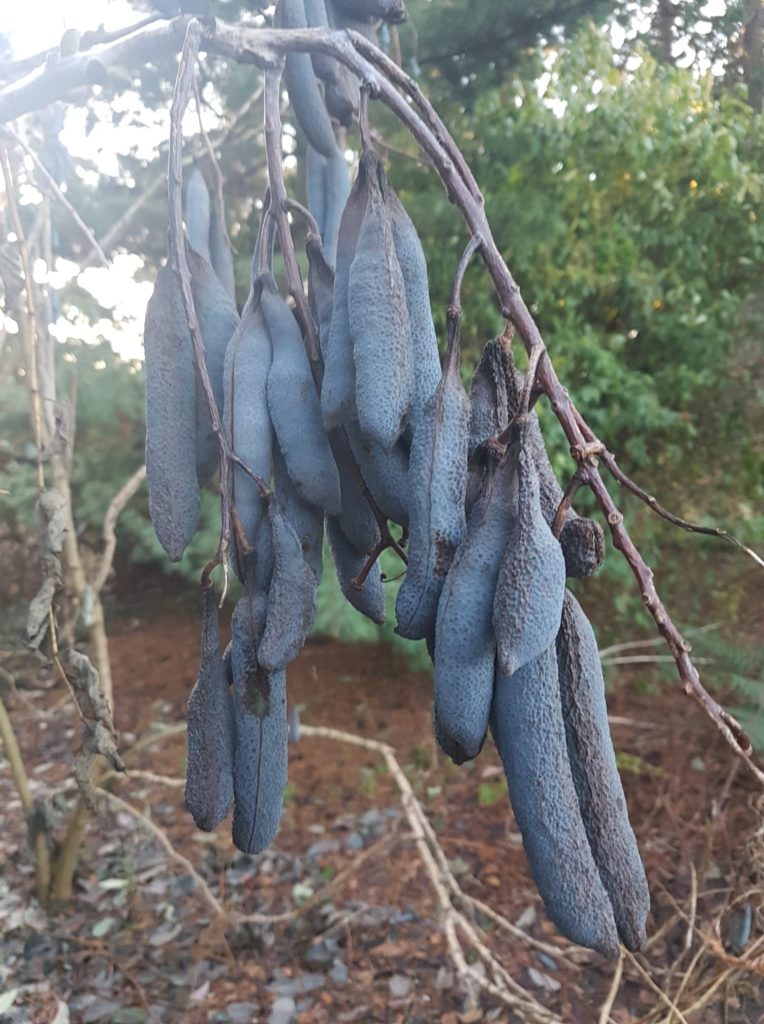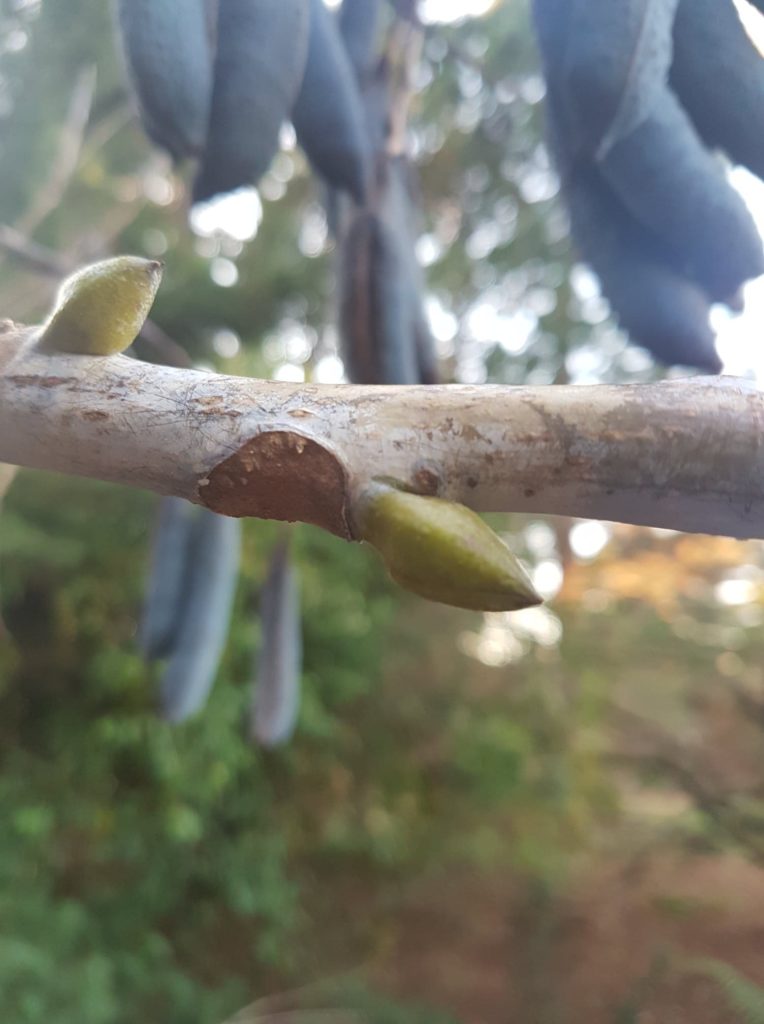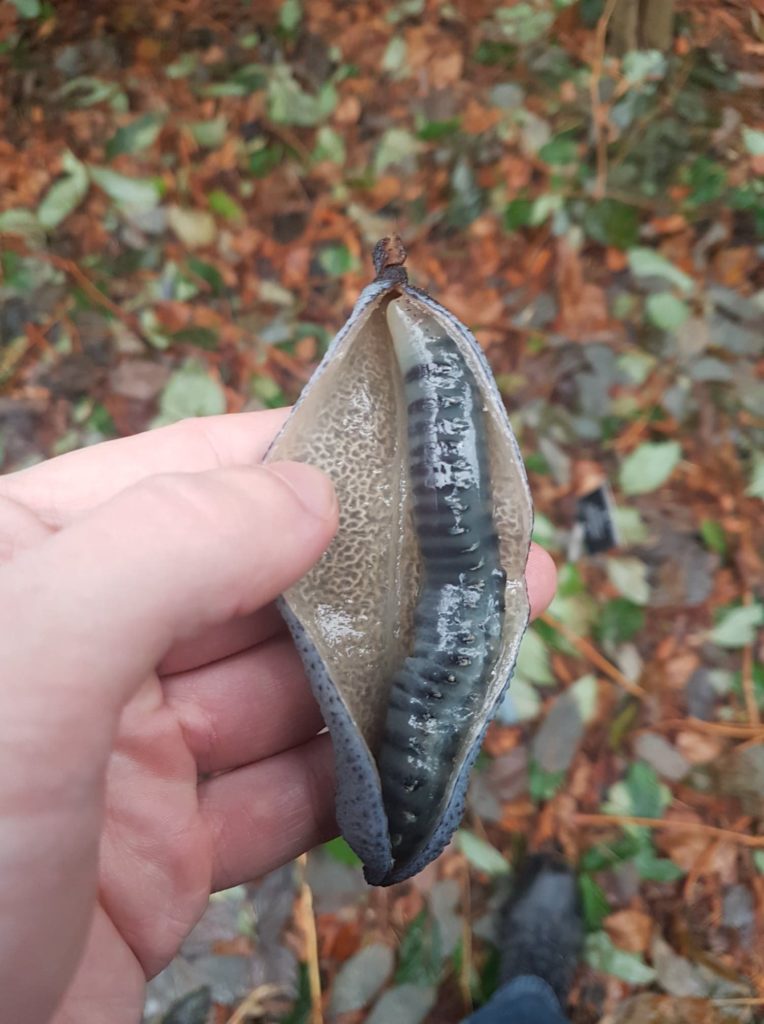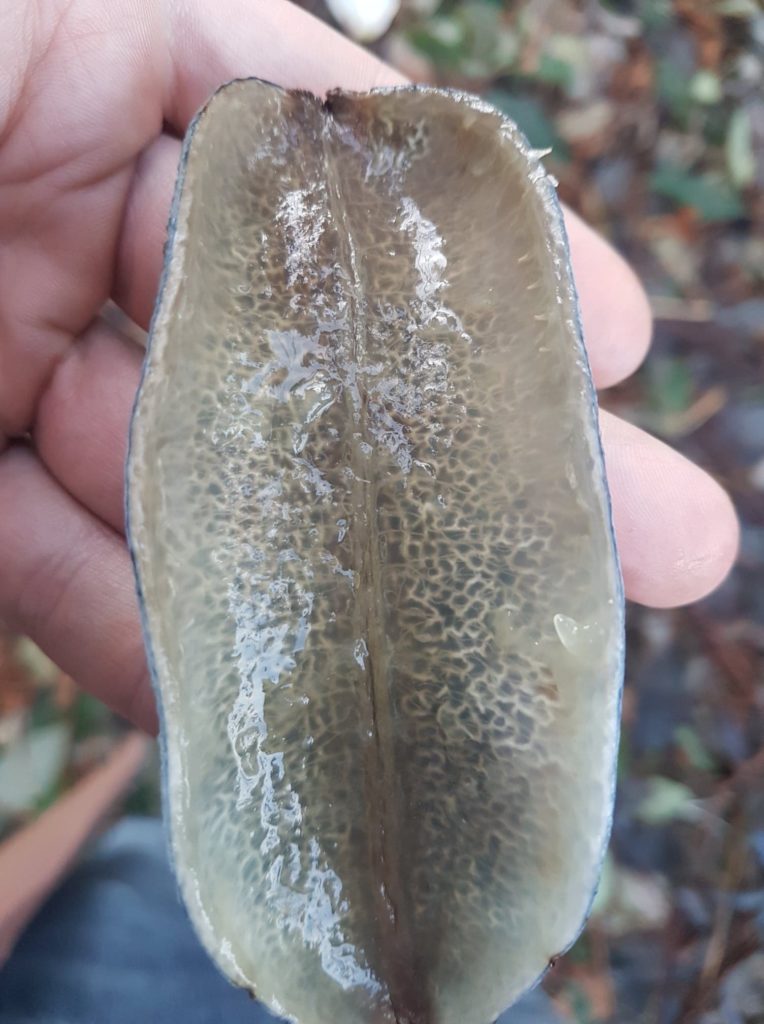

Seeds are phenomenal structures which have adapted incredible ways to disperse. One of the of the most eye catching seed pods in the garden at this time of year are the long, drooping blue fingers of Decaisnea insignis. The common name “Dead Man’s Fingers” originates from the supposed similarity of the fruit or ‘fruitlet’ feeling like a cold human finger.
These exotic fruits are in the Lardizabalaceae family, a rather small family of mostly climbers. Decaisnea insignis is native to China, Nepal, Bhutan, Myanmar with a small population in India. It grows at a range of altitudes and has a respectable hardiness of around -15C. It is a popular ornamental plant. Specimens can be seen in the Chinese Hillside and the west of the Rock Garden.
Now the exciting bit. The unusual seeds intrigued me when peeled open they reveal an odd translucent pulp which is surrounding the small flat black seeds. It reminded me of a jelly snake sweets you would purchase as a child. The pulp is edible although I did not find it particularly inviting to try i did, tasting of melon/ cucumber. The inner seed of the seed pod was also covered in a fascinating mosaic patterning.



Now the question, why did this plant evolve to have these incredible blue fruits and what animal dispersed it? The lure of edible pulp meant it must be an animal of some sort. A bird would be a valid option but red is the normal colour of attraction and plants know this. Many of the birds i looked at (Birds of China; Birds of the Himalaya) were very small and the 7-12 cm long fruit would present a big problem.
Why blue? Blue is rather scare in the plant kingdom, we have some familiar examples in the garden of Mahonia species, Vaccinium, Viburnum and Clerodendron trichotomum var. fargesii with its large red sepals. But it is still a relatively unusual trait to adopt, even more so in tropical parts of the world.
Interestingly when opening the fruit it did split like a banana which had a similar type of reward inside. A deal of dexterity would be required to open the fruit which i had almost failed at when I attempted opening it the first time. Sure enough, after some research it is reported in ‘Dispersal of Plants’ (RBGE Library FCVV) that some tropical trees with blueish fruits – Elaeocarpus, Symplocos fasciculatus & Eugenia acuminatissima have drupes dispersed by bats and monkeys. I then later found a paper on the dietary profile of the Snub nosed Monkey (Rhinopithecus spp.) which confirmed Decaisnea insignis in the diet.
However this still does not explain the need for the blue colour. Monkeys see just like us and don’t require an attractive blue colour to attract them in. Decaisnea insignis has previously been spilt into two distinct species with Decaisnea fargesii having yellow to green fruit.
We may have just not found the true missing link in this Decaisnea insignis partnership or I fear we may have lost this pair forever.
For more information on plant and pollinator ecology /dispersal partnerships:
Blue pollen in my other article ( https://stories.rbge.org.uk/archives/30986 ) on the New Zealand endemic Fuschia. For red pollen in the Nesocodon article ( https://stories.rbge.org.uk/archives/25796) by Max Coleman showed endemic Gecko pollinators.
